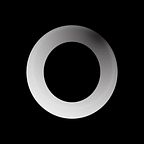By Bruce Pavitt — founder of Seattle’s Sub Pop, the record label that first discovered Nirvana, Soundgarden and Mudhoney.
As a youth growing up in Chicago, I became aware of artists releasing music on independent record labels. Visiting the Wax Trax! record store in the late 70’s, I was introduced to regional American acts like Devo (Akron) and the B-52’s (Athens), who were initially releasing their music on small, indie record labels. I understood intuitively that artists could work outside of the corporate music business, and establish control of their own culture.
A few years later, I moved to the Pacific Northwest and became involved with community radio (KAOS-FM) and started a zine which reviewed indie American releases. The zine, Sub Pop, then evolved into a record label of the same name, based in Seattle. Sub Pop is most noted for releasing early records by Nirvana, Soundgarden and Mudhoney, and is also noted for helping to frame Seattle as an important node of indie music, working outside of the mainstream music business.
When my business partner Jon Poneman and I officially opened our office doors on April 1, 1988, we had no idea the business would last 30 years and running. In the beginning, it was very difficult to keep things going, despite a growing fanbase for what was being hyped as Grunge. However, we were fortunate to be at the right place at the right time, and we had some strategies that proved to be very effective. Those strategies included generating collector interest by releasing some records as limited editions, as well as winning over the British music press, which has always been internationally influential. By combining limited editions and emphasizing global hype, we were able to build a mania around Seattle, Sub Pop and Grunge.
A tipping point for our label, and for Nirvana, happened on Dec 3, 1989. We organized a London Sub Pop showcase, Lamefest UK, which featured Nirvana, TAD, and Mudhoney. We sold out the 2000 capacity Astoria Theatre, and leading tabloid New Music Express declared “Nirvana are Sub Pop’s answer to the Beatles”. A little known corner of the United States, Seattle, was now officially on the map, and Nirvana were seen as the up-and-coming heavyweights of the scene. It was an amazing moment, but a moment that almost didn’t happen.
A week prior, Jon and I met up with Nirvana in Rome. We had heard that Nirvana’s singer, Kurt Cobain, was emotionally exhausted after playing every night of a 5 week tour of Europe. The night we arrived, Kurt had a breakdown on stage, climbed a PA stack and threatened to jump. After much consolation, and some time spent the next day sightseeing and decompressing, Kurt agreed to finish the tour, and proceeded to London, where he would establish himself as an international star. It was a pivotal moment.
This Grunge micro-history, one dramatic week in the life of Nirvana, was documented by myself in a series of photographs, and published as a book, Experiencing Nirvana. I’m grateful to have had the opportunity to experience the energy of the early Grunge shows, and to witness the international appreciation of the independent Seattle scene.
To further expand the audience for these images, I have partnered with Phosphene, and will be releasing a sequential NFT drop of 1/1s and editions the week of Nov 22, 2021.
